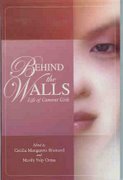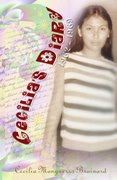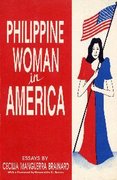My Friends, the Crows
Cecilia Manguerra Brainard
Years
ago, we didn't have crows in our neighborhood. We had song birds, smaller-sized
birds. I'm not sure when crows came around but suddenly they were on the
sidewalks, on top of trees and electric lines. They came around to eat the bird
food I left in our garden and they drank and bathed in the bird bath that I
kept clean and filled. At some point a bird flu epidemic killed many crows but
they came back.
One Spring morning I found a blue plastic ball right outside my
kitchen door. It was the size of a Ping-Pong ball, with faceted sides. I’d never
seen anything like it and I suspected it was left there for me, I saved it. I
did some research and learned about the girl in Seattle who fed the crows in
her garden and received gifts from them. When a crushed Styrofoam cup with a
dead cockroach in it appeared in the same spot the ball had been, I felt
certain a crow was giving me gifts. The appearance of another Styrofoam cup
with gooey stuff in it sealed my conviction that a crow or crows had been
leaving me these items.
The gifts inspired me to give them more bird food. Not too long after, I started seeing the young crows with their mothers feeding in our yard. An understanding between the crows and me evolved. I would give them food and fresh water every morning; and they would be outside on tree branches waiting for me. In fact, they would perch on an electric line above our upstairs patio, waiting for me to be up and about, then they would fly to the front garden for their food. They would even caw, to call me. Even more exciting was when they started following me on my walks. They would swoop near me, then perch on a post or tree ahead of me, wait for me to be nearby, then fly to the next perch, and so on. I learned to bring some peanuts or dry cat food when I took walks so I could feed them.
I learned that crows are very intelligent, that they are able to
perform reasoning tasks at a level comparable to a human seven-year old. (Guardian “Crows Reasoning Ability Rivals
that of Seven-year-old Humans - https://www.theguardian.com/science/2014/mar/26/crows-reasoning-ability-seven-year-old-humans).
There is a famous research project on crows, led by experts at the
University of Washington starting in 2006 (https://urban.uw.edu/news/crows-hold-grudges-against-individual-humans-for-up-to-17-years/). One finding was that
crows remember human faces and can in fact hold grudges against individual humans
for up to seventeen years. Specifically, the crows that were studied recognized
the masks worn by researchers as threatening, and they passed on the knowledge
of the threatening face to their young.
Other studies indicated crows could count, that they could create
tools. For instance crows dropped nuts on busy roads so cars would crack open
the nuts, which they retrieved once safe to do so. There’s a video of a crow dropping pebbles in
a water container to raise the water level so he could drink from it. They also
use twigs to extract insects from hard to reach places. In Sweden, the Corvid
Cleaning company are training crows to pick up cigarette butts, which they drop
into a machine that dispenses peanuts or some other food.
Crows have family units. The ones that come around move in groups
of two, or three or even five. Two crows – and I assume that would be the
mother and father – take care of a young crow. I have seen the mother feeding
the baby, which by the time I see them are about as big as the mother. The
father sits a bit further away. Sometimes, other crows – older siblings I
learned -- are present. Once there was a young crow with
some disability. He had a growth on his beak, and was not as “smart” as the
other young crows. His parents were always by his side, and when he got older,
his siblings accompanied him.
Near my house, there are trees where crows rest during the daytime, but at around sunset, they fly off to bigger trees where numerous crows roost. You can see them dotting the sky as they head home for the night.
I’ve received more gifts
from the crows: a bit of rusty metal (part of a garden rake, I believe); a
circular rubber piece which looks like the bottom part of a bowl. I’ve seen feathers
and chicken bones, which I don’t keep. I’ve saved the rusty metal along with
the blue ball and rubber thing.
These gifts touch me.
A crow recognized that I've been feeding
them and giving them clean water, and the crow went out of his or her way to
show his or her gratitude.
~end~
Bio:
Cecilia Manguerra Brainard is the award-winning author and editor of over 22
books,
including
the novels: When the Rainbow Goddess
Wept, Magdalena, and The Newspaper
Widow, and
her Selected Short Stories.
Her work has been translated into 11 languages.
She
has received an Outstanding Individual Award from her birth city of Cebu, a California
Arts Council Fellowship, travel grants from the US Embassy and the National
Book Development Board, National Book Award, Cirilo Bautista Prize, among others.
She runs a small press, PALH or Philippine American Literary House.
Cecilia Brainard Fiction: The One-Night Stand at the Frankfurt Book Fair
Cecilia Brainard Fiction: After the Ascension
Celebrating Translations of Cecilia Manguerra Brainard's Fiction
How I Became a Writer Series
Tags: #corvids #crows #genuscorvus #corvus






























No comments:
Post a Comment